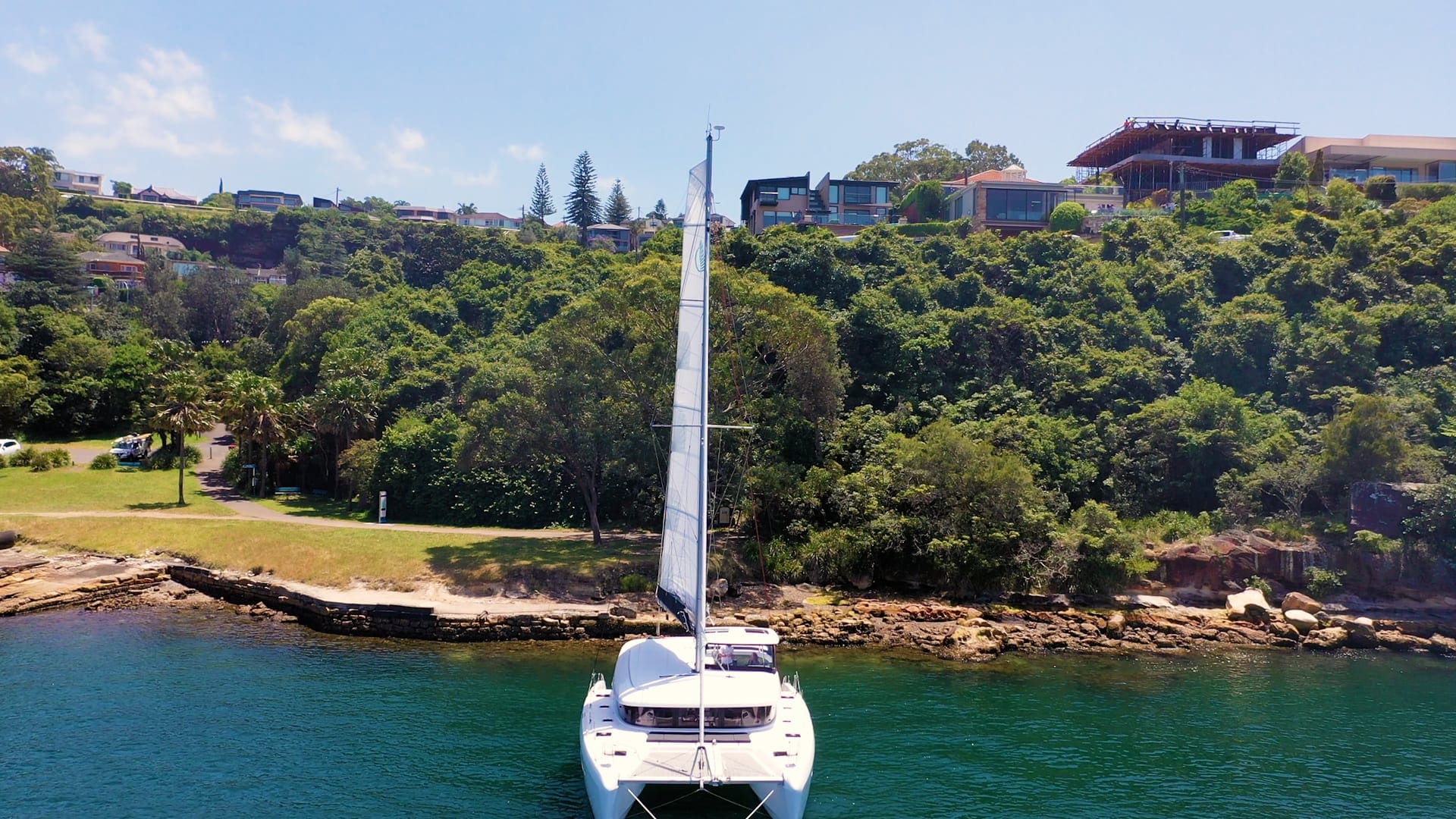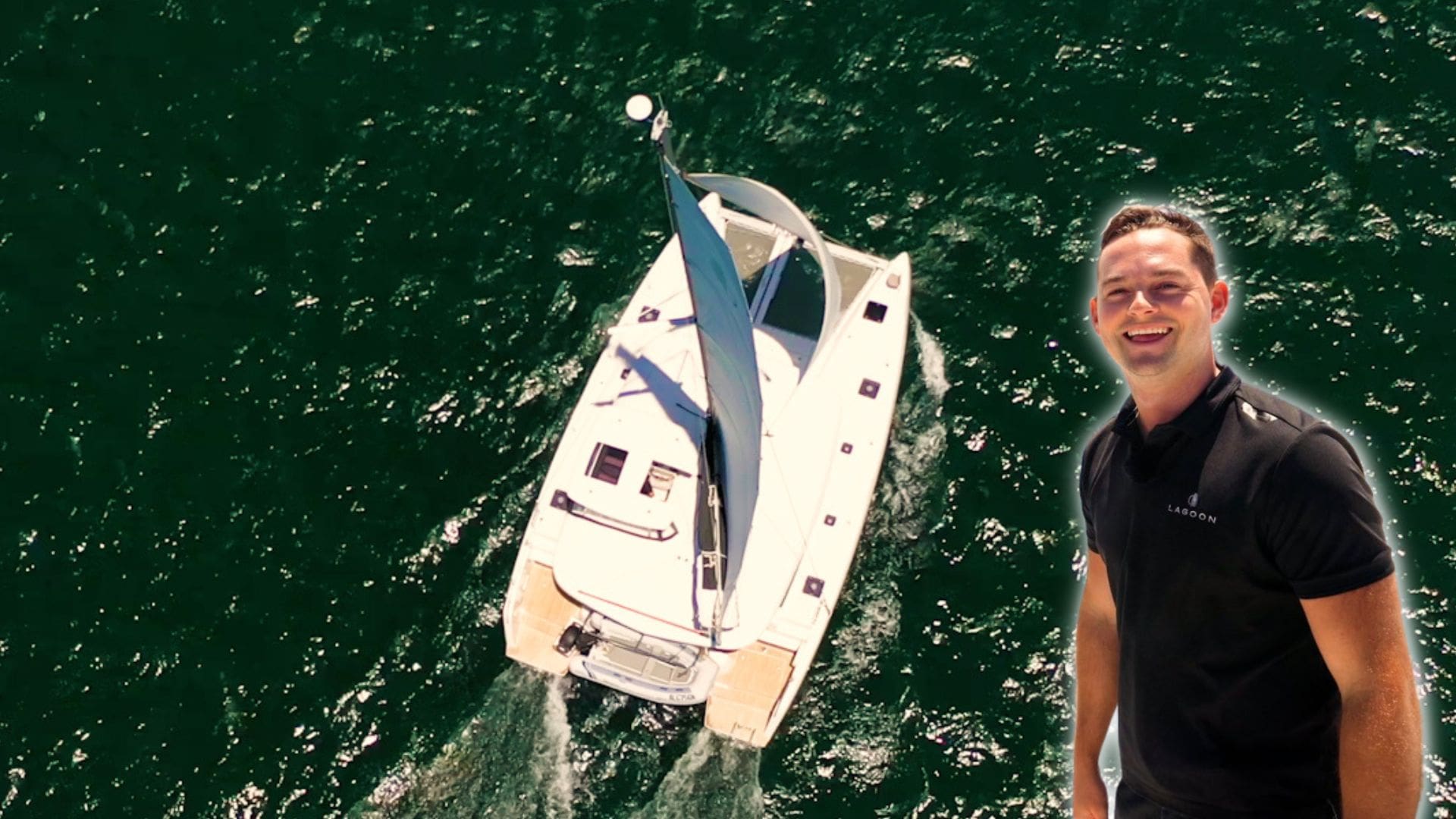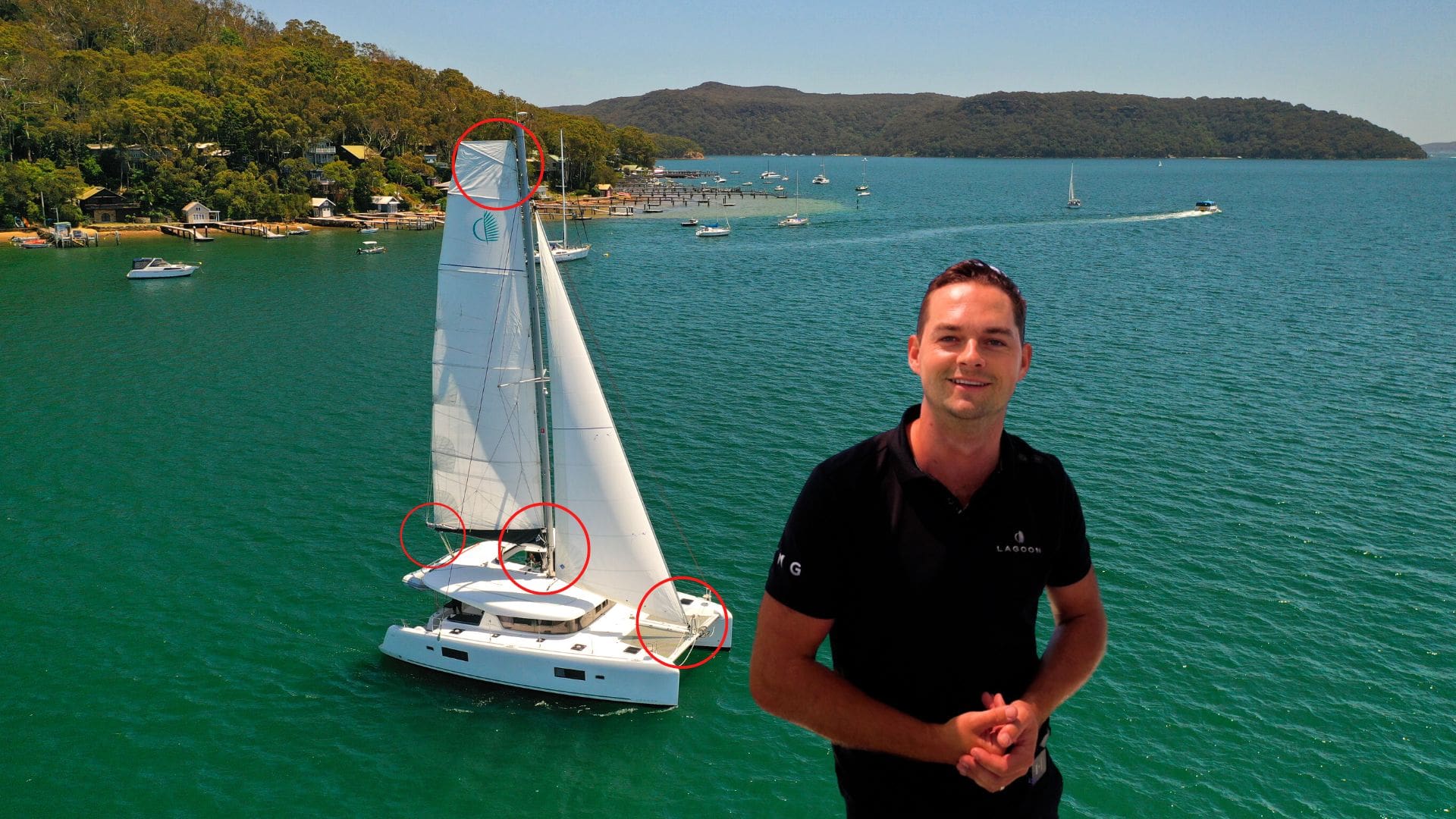Reefing a Mainsail on a Catamaran
In this episode, we’re going to be looking at reefing and why you use your reefing lines, how the single line reefing on a Lagoon 42 is run and the processes involved with lowering the sail to reduce your sail area when the wind strength builds.

Why to reef?
The reason we reef on a catamaran like this is to reduce the stresses and strains on the rig. As the wind builds the pressure in the shrouds and the forestay and the whole structure of the boat is increased, so we decrease the sail area using something called single line slab reefing on the Lagoon 42 which reduces the windage on the rig and also reduces the tension in the shrouds the lines or your running gear, allowing you to safely navigate in high wind strengths.
When to put a reef in?
Each boat is different and it’s important that you look in the manual of your boat for the wind ratings per reef. Go to the manual and look for the first reef, X amount of wind is my cutoff and so-and-so all the way up to reef three.


Understanding single line slab reefing
There are three points attaching a mainsail to a boat.
- The head at the very top where the main halyard is used to lift and lower the mainsail.
- The tack at the front
- The clew at the back of the foot of the sail
Preparation
- Head to wind or close to wind – You need to make sure that you take as much pressure or as much wind out of the sails as possible. Whether this is going head to wind or whether this is going close to the wind, still sailing maybe on the jib and easing the boom right out, this will reduce the pressure in the main because the main will not fall down if it has tension and wind in it. So position the boat in a way where the main is loose, not flat, not flogging too hard because that can damage the sail, just loose with not too much wind in it.
- Make sure there are no knots in the main halyard
- Ease off the main sheet – so the boom is nice and loose, so if we do get a gust of wind from the side the main just moves with it
- Mark your main halyard – This will help you know where to let down your sail. We recommend using whipping twine


Putting in a reef
- Lowering the main halyard – Either look at the sail which will tell you when to stop or look for the mark prepared earlier on the main halyard. Once in the right position, pop it back on the winch.
- Pull-on the correct reefing line. This might be quite easy at first because there should be lots of slack because the main has come down but as it gets tighter, put it into a winch and just pull it down nice and tight, to pull the tack and on the clew down close to the boom.
What the correct set up looks like…
- Back of the sail – the reefing line has gotten really tight and the black eye which was previously two meters further up the sail is now down and it’s just off the boom. If you come too far down, you’ll get the eye touching on the boom, which may damage the boom or the eye itself. In this position, it is being pulled down to the boom and also backward acting in a way as your outhaul.
- Front of the mainsail – You should see the black eye, which was previously about two meters further up. You should see the reefing line, which comes out of the boom up to the eye and then down to the spectacle in the rig. In this configuration, it’s pulling the sail down and forward. (Important in this position to minimize chafing. If the eye comes too low, the angle on this line in relation to this spectacle will be too sharp and might chafe).

LATEST FROM THE BLOG
How to Trim Downwind – Basic Sailing Techniques
In this episode, we will delve into the art of sail trimming when sailing downwind. Whether you’re a seasoned sailor or just beginning to explore the boating world, understanding the nuances of sail trim can significantly enhance your boat handling abilities. Join our expert team as we provide insights, tips, and techniques to help you optimise your downwind sailing experience.
How to Trim Upwind – Basic Sailing Techniques
In this blog, we will look at how to trim your sails when sailing upwind. Sailing upwind is classified as sailing at any angle lower than 90 degrees to the wind. Sailing directly into the wind is not possible; therefore, to sail in the direction of the wind, you must continuously tack in a zig zagging motion.
How to Prevent Chafing
In this episode, Joe teaches us how to prevent chafing and what the critical chafing points are on a cruising catamaran.



